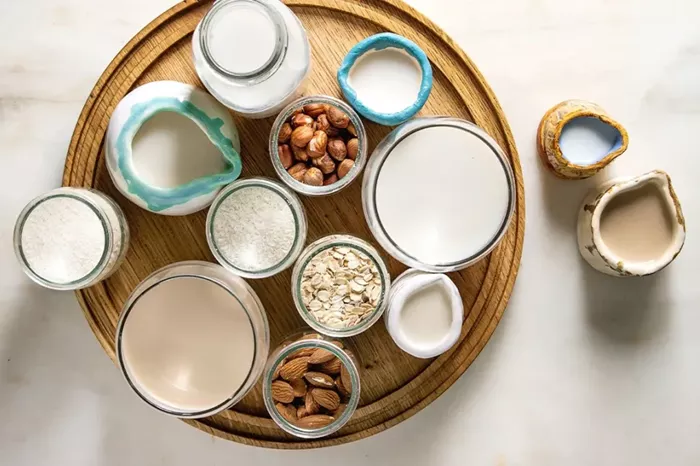Coffee-Mate is a popular coffee creamer that many people use to enhance their coffee’s flavor and texture. But have you ever wondered what’s inside this convenient creamer? In this article, we’ll explore the ingredients and manufacturing process behind Coffee-Mate, providing you with a detailed understanding of what goes into every cup.
Introduction to Coffee-Mate
Coffee-Mate, introduced by Nestlé in 1961, is a non-dairy creamer designed to add creaminess and flavor to coffee. It’s available in various flavors and forms, including liquid and powder. Its popularity is due to its convenience, extended shelf life, and ability to blend well with coffee without curdling.
Ingredients in Coffee-Mate
Understanding what Coffee-Mate is made from involves looking at its key components. Let’s break them down:
1. Sugar
Sugar is one of the primary ingredients in Coffee-Mate. It adds sweetness to the creamer and balances the flavors. Typically, the sugar used is sucrose, which is derived from sugar cane or sugar beets.
See Also: What Is Starbucks Base Syrup
2. Vegetable Oil
Vegetable oil is another main ingredient. It provides the creamy texture that Coffee-Mate is known for. The oils used are often palm oil, soybean oil, or a blend of various vegetable oils. These oils are chosen for their ability to remain stable at room temperature and blend smoothly with coffee.
3. Sodium Caseinate
Sodium caseinate is a milk-derived protein used as an emulsifier in Coffee-Mate. Despite its dairy origins, it doesn’t contain lactose, making it suitable for those who are lactose intolerant. Sodium caseinate helps to stabilize the creamer, preventing it from separating and ensuring it mixes well with coffee.
4. Artificial Flavorings
Coffee-Mate comes in a variety of flavors, and these are achieved through artificial flavorings. These flavorings are designed to mimic natural flavors and provide a consistent taste experience. Common flavorings include vanilla, hazelnut, and caramel.
5. Artificial Colors
In some varieties, artificial colors are added to enhance the visual appeal of the creamer. These colors do not affect the flavor but make the product more attractive. They are used in moderation and are approved for use in food products.
6. Stabilizers and Thickeners
To achieve the desired consistency, Coffee-Mate includes stabilizers and thickeners. These ingredients help to maintain the creamer’s texture and prevent it from separating over time. Common stabilizers include xanthan gum and guar gum.
7. Preservatives
Preservatives are used to extend the shelf life of Coffee-Mate. They inhibit the growth of bacteria and mold, ensuring the creamer remains safe to use for an extended period. Sodium benzoate and potassium sorbate are examples of preservatives used in Coffee-Mate.
Manufacturing Process
The process of making Coffee-Mate involves several steps to blend these ingredients into a smooth, consistent product.
1. Mixing
The first step is mixing the dry ingredients, such as sugar and stabilizers. These are combined in large mixers to ensure an even distribution.
2. Emulsification
The vegetable oil and sodium caseinate are emulsified to create a stable mixture. This process involves combining the oil with water and the emulsifier to form an emulsion that remains stable in the final product.
3. Flavoring and Coloring
After the basic mixture is prepared, flavorings and colorings are added. These are carefully measured and blended into the mixture to ensure uniform flavor and appearance.
4. Homogenization
The mixture is then homogenized, a process that ensures the ingredients are well-blended and the texture is smooth. This involves passing the mixture through high-pressure equipment that breaks down any large particles and evenly distributes the ingredients.
5. Packaging
Once the mixture is ready, it is cooled and then packaged. Liquid Coffee-Mate is filled into bottles or cartons, while powdered versions are packed into containers. The packaging is designed to keep the product fresh and prevent contamination.
Nutritional Information
Coffee-Mate is designed to enhance coffee, but it’s essential to be aware of its nutritional content. A typical serving of Coffee-Mate (1 tablespoon) contains:
- Calories: Approximately 35
- Fat: 1.5 grams
- Sodium: 5 milligrams
- Carbohydrates: 6 grams
- Sugars: 5 grams
It’s low in protein and doesn’t provide significant vitamins or minerals. Those who are monitoring their calorie or fat intake should consider this when adding Coffee-Mate to their coffee.
Allergen Information
While Coffee-Mate is a non-dairy creamer, it contains sodium caseinate, which is derived from milk. Therefore, it may not be suitable for individuals with a milk allergy. It’s important to check the label for allergen information to ensure it meets your dietary needs.
Environmental and Health Considerations
The production of Coffee-Mate involves several ingredients and processes that have environmental and health implications.
Environmental Impact
The production of vegetable oils, especially palm oil, has been linked to deforestation and habitat destruction. Nestlé and other companies are increasingly aware of these issues and are working towards more sustainable practices.
Health Concerns
Some health concerns related to Coffee-Mate include its use of artificial ingredients and preservatives. While generally considered safe for consumption, some people prefer to avoid artificial additives and opt for natural alternatives.
Conclusion
Coffee-Mate is a widely used coffee creamer with a complex blend of ingredients designed to enhance the flavor and texture of your coffee. From sugar and vegetable oils to sodium caseinate and artificial flavorings, each component plays a role in creating the final product. Understanding these ingredients helps you make informed choices about what you put in your coffee.
Whether you enjoy it for its convenience or flavor, knowing what goes into Coffee-Mate can help you appreciate its role in your daily coffee routine.


